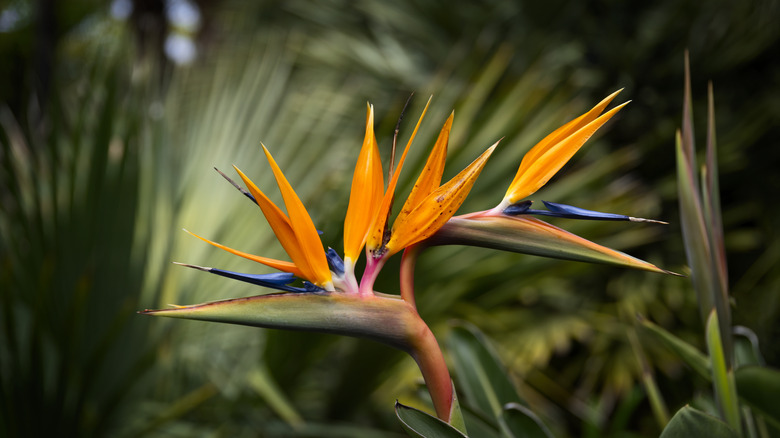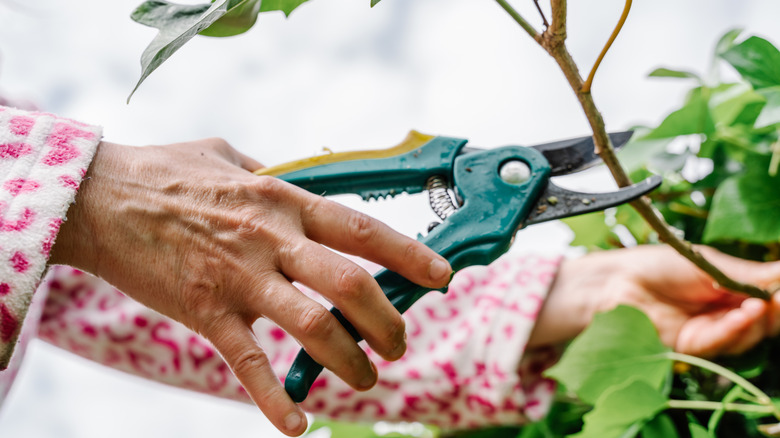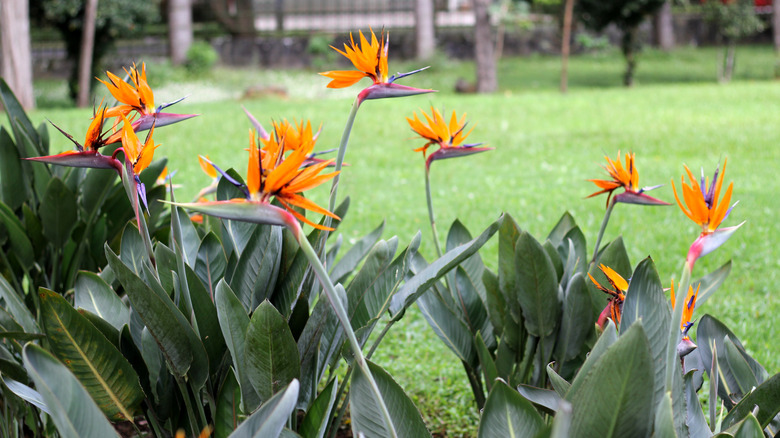How To Prune Bird Of Paradise The Correct Way
If your bird of paradise is looking a bit too much like a bird's nest with messy stalks, overcrowded flowers, and dried-out greenery, it's probably time for a trim. While these tropical plants are known for their large, vibrant leaves and signature bird-shaped flowers, they will most likely not stay picture-perfect all on their own. Over time, even the healthiest bird of paradise can become overgrown, especially when dried leaves and spent flowers are left on the plant. But with the proper maintenance regimen, you can easily ensure healthy growth on your bird of paradise, helping to restore its original shape in the process.
The key to trimming your bird of paradise plant (Strelitzia spp.) is knowing why you might need to give it a trim in the first place. It isn't just about the aesthetics of your plant, but it can actually help them thrive in their respective environments. Trimming or clearing out dead and damaged growth provides space for new leaves to thrive and will encourage healthy growth from your plant. The same applies to previously blossomed flowers, which should be removed to make space for new ones. Even healthy plants may need a bit of pruning to further promote healthy growth, as overcrowding stalks can foster disease and limit the amount of sunlight that the base of the plant receives. Armed with everything you may need to know before planting your bird of paradise, you're ready to tackle pruning your tropical plant.
Properly trimming your plant
Pruning a bird of paradise properly requires a bit of precision and knowledge to ensure that you are not sacrificing any healthy leaves or flowers in the process. Excessive trimming can jeopardize the health of your plant, as it may not be able to absorb sufficient sunlight. Start by grabbing a clean set of shears that have been disinfected with rubbing alcohol. You'll want to identify any unhealthy leaves, whether they are yellow, browning, torn, or otherwise damaged. Trim each leaf down to the base of the plant. Bird of paradise produces new leaves from the base of the plant, meaning any remaining stalks will not grow additional leaves once they have been cut. At the same time, you can also remove flowers that have already bloomed, as they will not regrow their flowers from dead ones. Cutting them off will actually encourage your plant to produce new flowers, which can bring back that signature orange and purple to your garden.
Pruning your bird of paradise isn't just about clearing away dead leaves and flowers, but you also may need to thin out the base of the plant. Because each leaf grows from the same location, your plant may become overcrowded without regular pruning. You'll want to remove any areas where the leaves overlap significantly to reduce foliage density. This improves airflow and light penetration to the plant, which helps promote growth and prevent the spread of disease. Pruning may also be the right time to fertilize your bird of paradise to further foster healthy growth.
When to prune for the best results
Timing your pruning correctly is just as important as the technique itself. The best time to prune most bird of paradise is typically between late winter and early spring, before the plants have the chance to fully enter their active growing periods. Bird of paradise, Strelitzia reginae, can endure a light cleanup or trimming at any point during the year, but you'll want to save bulkier pruning jobs for early in the springtime. This will give the plant a shorter window before it starts to grow again, meaning you won't threaten its ability to gather sunlight in the pruning process. When growing a bird of paradise indoors, you can prune it at any point during the year but spring is still the best time.
Desert-dwelling bird of paradise, often referred to by the color of their flowers, belong to a different genus and require slightly different pruning timelines and methods. These shrubs are typically pruned to remove any frostbitten, dead, or crossing limbs. Red bird of paradise (Caesaepinia pulcherrima) thrive if they are pruned as the temperature starts to cool. However, they can also handle regenerative trimming between late winter and early spring, but it should be well after the last frost of the season. Yellow bird of paradise (Caesaepinia gilliesii) follows a similar timeframe for pruning, typically between late winter and early spring. For these plants, you will only need to cut away any dead flowers or limbs to half their length. Mexican bird of paradise (Caesaepinia mexicana) plants will also only need to be pruned during those seasons, again trimming away dead flowers and branches sparingly.


